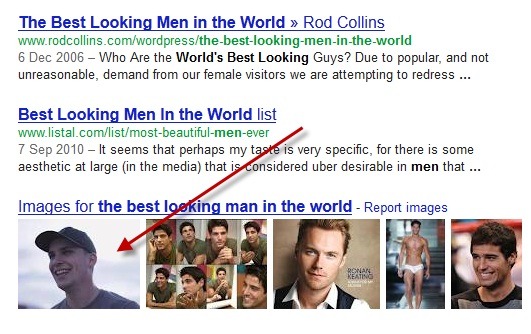Let’s Get Visual!
 Google recently published a list of over 40 changes they made to their algorithm. Among these changes was a tweak to Google’s image search:
Google recently published a list of over 40 changes they made to their algorithm. Among these changes was a tweak to Google’s image search:
“[…] We launched a change to expand the corpus of results for which we show images in Universal Search. This is especially helpful to give more relevant images on a larger set of searches.”
In a nutshell: More searches are now triggering image-based results. If you’re not leveraging image optimization you’re missing out an opportunity to drive traffic to your site!
Image Optimization? Why Bother?!
Google tends to give favorable positioning to image search results, often placing these high up on the first page of results (usually within the top 5). If you’re in a highly competitive niche where organic rankings are difficult to come by, image search may be a way to grab some visibility.
In addition, many searches are by nature image-orientated. If a searcher types “creative birthday cake”, “red couches” or even “new kitchen utensils”, chances are they have some interest in seeing pictures of those products. Being present here is a way to generate awareness of your product or service.
For example, if you’re a kitchen renovations company, image search would be a great place to tap into traffic for searches like “kitchen renovation ideas”. If you sell skiing apparel, owning that top placement for “cool ski boots” could work to your advantage. Or, if you’re like me, being the best looking man in the world just got a whole lot sweeter. In fact, that placement alone helped to drive over 500 visitors to my site in February. Not too bad!

Even “drilling rigs” prompts image search results – and while an oil & gas company is unlikely to get any leads from that sort of presence, if your image is posted elsewhere on the web you can build links by asking those who used it to cite your website as the source. (A great tool for doing this is Tineye!)
How Is It Done?
Search engine spiders aren’t like humans – they can’t “see” the content of images (thank goodness, or my “best looking man” campaign never would have panned out!).
That said, there are many ways to give search engines clues as to what your image is about. Ranking images is a lot like ranking your overall website. It’s a combination of your image’s file name, the alt attributes used, the surrounding content, the overall strength of your domain, the quality of your image and a host of other small factors all working together to help Google understand your image content.
It’s Time To Get Visual
Take a moment and do a few quick searches for keywords in your niche. How many bring up image results? Are your pictures visible? If not, now is a great time to start thinking about how you can bring a visual component into your online marketing strategy!